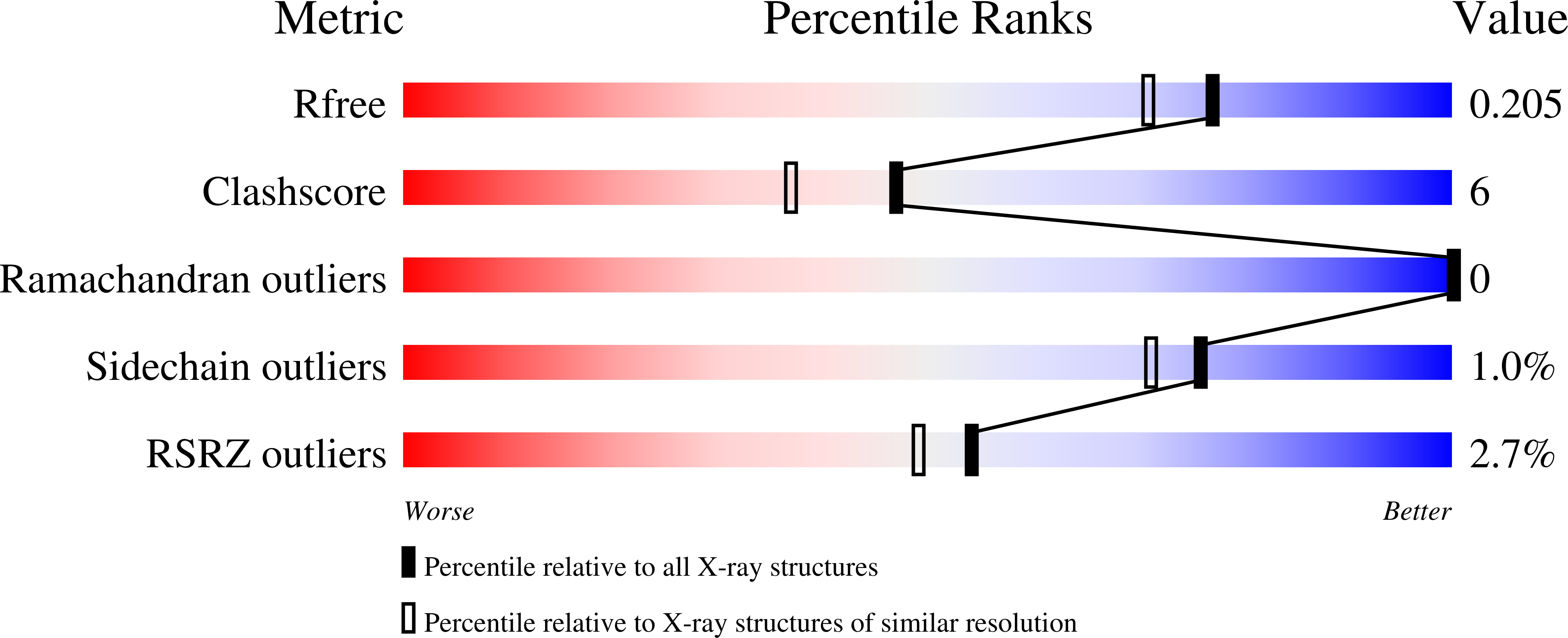Structural and enzymatic characterization of Os3BGlu6, a rice {beta}-glucosidase hydrolyzing hydrophobic glycosides and (1->3)- and (1->2)-linked disaccharides.
Seshadri, S., Akiyama, T., Opassiri, R., Kuaprasert, B., Cairns, J.R.K.(2009) Plant Physiol
- PubMed: 19587102
- DOI: https://doi.org/10.1104/pp.109.139436
- Primary Citation of Related Structures:
3GNO, 3GNP, 3GNR - PubMed Abstract:
Glycoside hydrolase family 1 (GH1) beta-glucosidases play roles in many processes in plants, such as chemical defense, alkaloid metabolism, hydrolysis of cell wall-derived oligosaccharides, phytohormone regulation, and lignification. However, the functions of most of the 34 GH1 gene products in rice (Oryza sativa) are unknown. Os3BGlu6, a rice beta-glucosidase representing a previously uncharacterized phylogenetic cluster of GH1, was produced in recombinant Escherichia coli. Os3BGlu6 hydrolyzed p-nitrophenyl (pNP)-beta-d-fucoside (k(cat)/K(m) = 67 mm(-1) s(-1)), pNP-beta-d-glucoside (k(cat)/K(m) = 6.2 mm(-1) s(-1)), and pNP-beta-d-galactoside (k(cat)/K(m) = 1.6 mm(-1)s(-1)) efficiently but had little activity toward other pNP glycosides. It also had high activity toward n-octyl-beta-d-glucoside and beta-(1-->3)- and beta-(1-->2)-linked disaccharides and was able to hydrolyze apigenin beta-glucoside and several other natural glycosides. Crystal structures of Os3BGlu6 and its complexes with a covalent intermediate, 2-deoxy-2-fluoroglucoside, and a nonhydrolyzable substrate analog, n-octyl-beta-d-thioglucopyranoside, were solved at 1.83, 1.81, and 1.80 A resolution, respectively. The position of the covalently trapped 2-F-glucosyl residue in the enzyme was similar to that in a 2-F-glucosyl intermediate complex of Os3BGlu7 (rice BGlu1). The side chain of methionine-251 in the mouth of the active site appeared to block the binding of extended beta-(1-->4)-linked oligosaccharides and interact with the hydrophobic aglycone of n-octyl-beta-d-thioglucopyranoside. This correlates with the preference of Os3BGlu6 for short oligosaccharides and hydrophobic glycosides.
Organizational Affiliation:
School of Biochemistry, Institute of Science, Suranaree University of Technology, Nakhon Ratchasima 30000, Thailand.
















